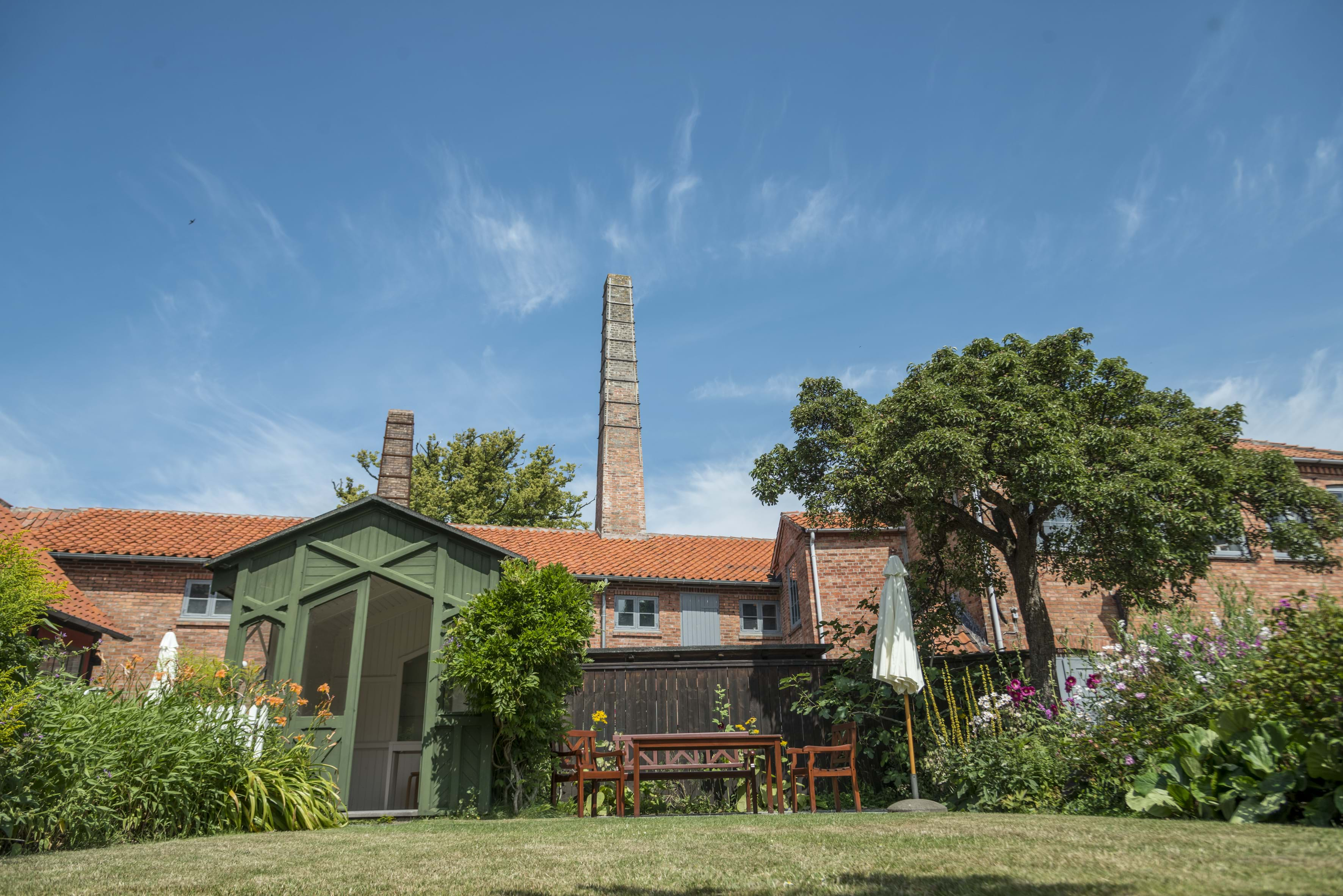GUIDED TOURS IN HJORTH'S WORKSHOPS AND EXHIBITIONS
Join the introduction to Hjorth's work at the factory at 11:00AM every Saturday.
During June - July - August you can join the introduction Monday - Saturday 11AM and 2PM.
The guided tour is included in the entrance fee.
On the tour you will learn about the journey from raw clay to products to purchase in the shop. The old factory from 1859 holds a great history and tradition. We will also present to you the current exhibitions at Hjorths Fabrik.
EXPERIENCE THE TRANSFORMATION OF THE CLAY
First the clay is rinsed from stones, sand and dirt. Then it is squeezed through a filter to seperate clay and water. Secondly the clay is put under vacuum pressure to remove all air bubbles, and to wrap the clay in plastic.
The rinsing disturbs the molecules in the clay and after min. 6 months of maturing in the clay basement, the molecules have found back to their natural structures. The process makes the clay pliable and ready to modeling.
Our clay mill makes it possible to reuse the clay, that have not yet been heated. Pieces with flaws can then be pulverized and reused as casting slip. The casting slip is mixed in the ball mill to be grounded with water.
We process the clay in the heart of the factory. The workshop is maintained from 1862. The ceramists worked at the potter's wheels - the masters in front and the apprentices in the back.
In 1880s a working week was 60 hours from Monday to Saturday, while Sunday was free to go to church. It is from the very same workshop all of our ceramics is produced.
This is where all the wheel-thrown pottery and ceramics are created and the process of the cast pottery is finalized. Rims, mouths for jugs and handles are processed before the ceramics are ready for the first firing at 800 celsius degrees.
Here the factory's production of figures are made in plaster forms. They can be made from several individual pieces, which are stored in cupboards with high level of humidity until all pieces are ready to be put together.
The cast workshop is located in the original paint workshop. This is where the terracotta vases with black decorations and the stoneware with colorful flowers have been carefully painted. Since 1970 some of the stoneware have been cast in plaster forms.
The liquid casting mass is poured into the forms and will reach the right thickness over time. Handles and mouths are being cast individually and eventually attached on cups and jugs in the throwing workshop.
There is a long tradition for decorating ceramics at Hjorths Fabrik. Originally Lauritz Hjorth made copies of Greek vases and decorated them with black figures. Pictures from Bornholm's landscape was also depicted on black-painted vases and bowls. Shortly before World War II Hjorths Fabrik was mass producing grey-brownish stoneware painted with beautiful, naturalistic patterns and jugend-designed decorations. They were designed by Lauritz Hjorth's daugther Thora and were painted by female painters in the workshop, our present cast workshop.
After bisque the ceramics are glazed. All glazes are made in the factory from different raw materials, clay sorts and metal oxide. Our characteristic brown gallipot glaze is made from the clay from Sose and the very dark granite from Rønne. Our stoneware can be found in the classic dark gallipot glaze and in a much lighter Celadon glaze.
The glaze turns to glass in the last firing and the stoneware clay turns to solid rock. We fire in a gas kiln to create oxygenless conditions during the firing process. The atmosphere in the kiln 'eats' the oxygen from metal oxide in the glaze, which make the texture of the gallipot glaze silky and smooth.
You can see both our old wood-fired kilns from 1910, which have been used until 1964, and the gas kilns we are using today. We use the electric kilns for the bisque and for the glaze firing we use the gas kiln.
It took four days for the old kilns to be packed with ceramics. When they were full the opening was bricked up and the fire woods was refilled through two holes in floor level.
When the kiln reached top temperature these holes were bricked up too. The fire woods came from the factory's own woods, South from Rønne, and it took two men, two days to make the kilns reach top temperature.
Today the process is much easier; we turn on the gas kiln in the morning and by noon we turn up the gas to create the right conditions for the glazes. By afternoon the kiln reach the top temperature and the ceramics are done. It takes two days for the kiln to cool down, and after that the kiln can be emptied and the ceramics are ready for sale.





